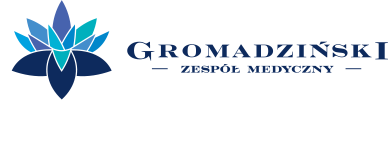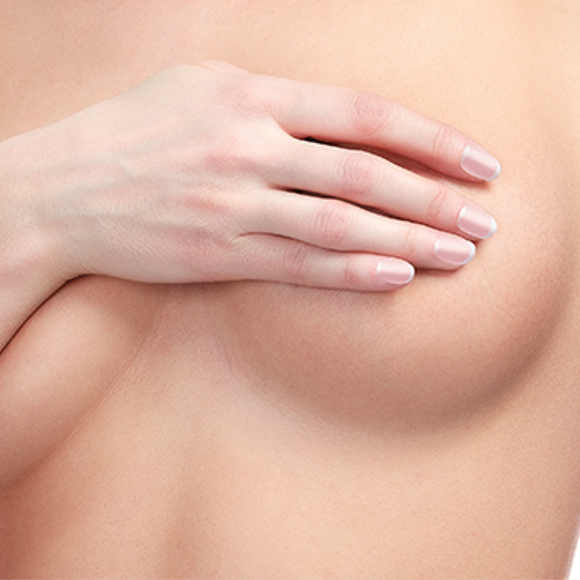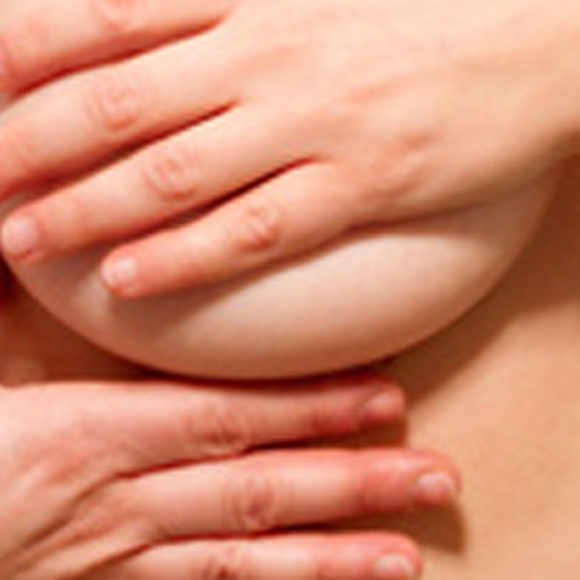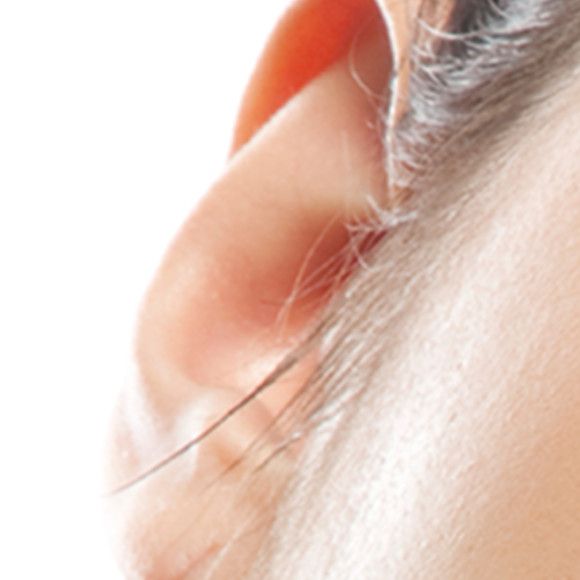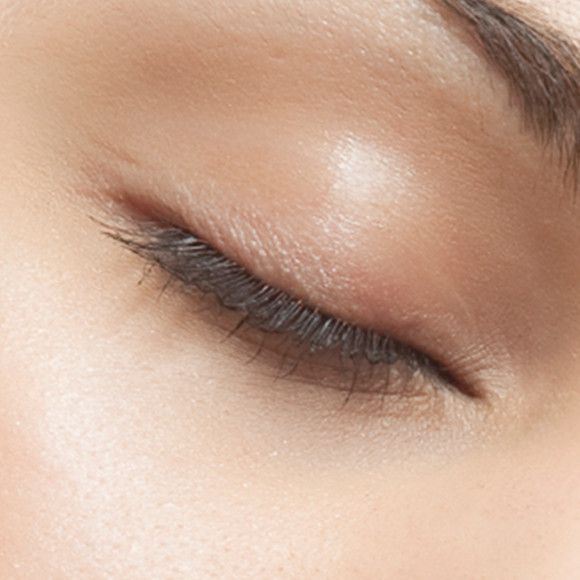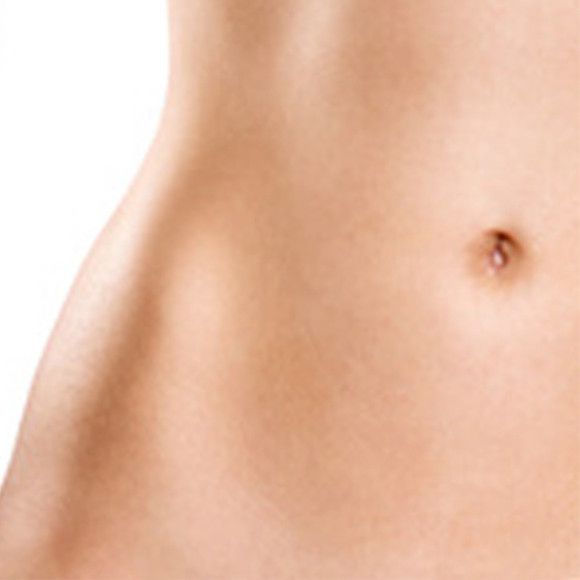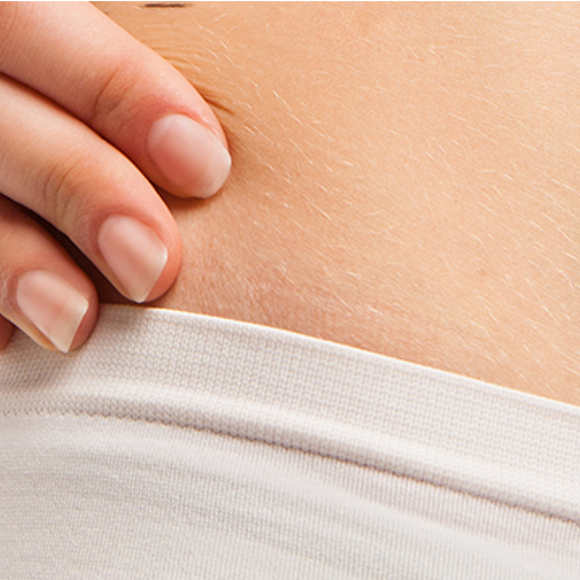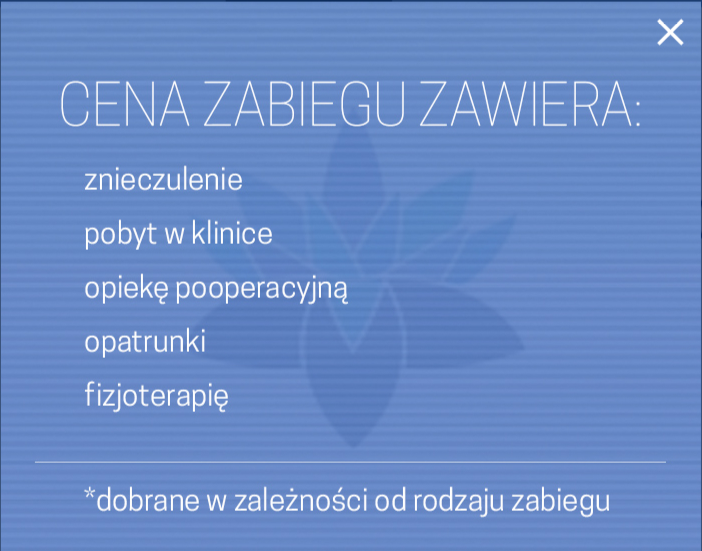Plastic sugery
Breast reduction
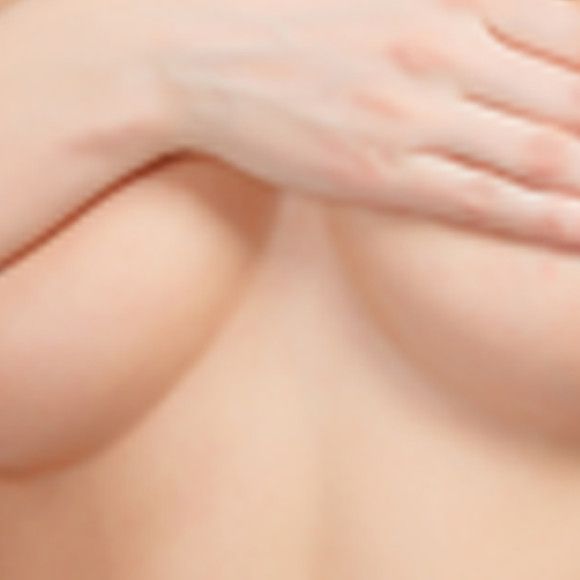
- Description of treatment
- Facts and myths
- Preparation for surgery
- Postoperative care
Description of treatment
Breast reduction surgery is a procedure performed both for aesthetic reasons and for purely medical indications. The operation involves reducing the mass of the breast, and its reconstruction providing a look that is aesthetic and proportionate to the body.
Breast deduction surgery is performed in patients with large breasts (natural or being a result of pregnancy, weight gain, hormonal disorders). Patients choose breast reduction for medical or aesthetic reasons. Too big breasts are in fact a serious burden for the back - ladies complain of pain in the thoracic spine, back pain, and skin irritation in the folds under the breasts and shoulders (bra straps are burdened with too much weight). Breast reduction surgery significantly improves the quality of life and allows to obtain an aesthetic breast shape.
During the consultation the doctor shows the patient how her breasts will be reduced. The operation is performed under general intravenous anesthesia. The patient stays in the clinic for one day.
Reducing the breasts involves making a cut in the lower quadrants of the breast, and around the breast areolas, and subsequently releasing the skin of the lower quadrants of the breast, correction or excision of part of the breast parenchyma and transferring the nipples and areolas to a previously planned height. As a result of the surgery there remain barely visible scars around the breast areolas and possibly scars in the lower quadrants of the breast. The shape, size and location of the scars are consulted with a doctor prior to the surgery and depend on the chosen surgical technique, the shape of the breast, etc.
Facts
You can reduce size of only one breast.
In nature there is no perfect symmetry therefore no patient has perfectly equal breasts. In cases of women where disparities are highly visible, reduction of only one breast may be carried out.
Myths
After breast reduction women cannot breastfeed.
It all depends on the degree of surgical intervention and methods of breast reduction. Occasionally breast reduction requires the removal of a part of the gland, and the scars which are then formed in the gland can prevent breast-feeding. This does not apply to all patients. There are also special techniques, thanks to which fewer scars can be left and therefore the risk of obstruction of the glands can be reduced.
Breast reduction surgery is impermanent.
Breasts reduction effects persist for a long time. We must remember, however, that breasts can increase their size, for example, as a result of weight gain, but also decrease it (due to the natural process of aging or hormonal disorders).
Preparation for the surgery
Each surgery is a burden for the human body. That is why our specialists always conduct interviews to qualify patients for surgery. General conditions for the surgery to be conducted include:
- good health (we do not perform procedures in patients with infections, particularly upper respiratory infections; anesthetic consultation is sometimes also recommended);
- procedures are not carried out during menstrual discharge, due to the reduced blood coagulability;
- it is necessary to test bleeding time and blood coagulation time, and perform complete blood count;
- t is necessary to perform breasts ultrasound or mammography - depending on the diagnosis we conduct further treatment and qualify for surgery (if the test shows changes in the breasts, we start their treatment after surgery);
- it is advisable that the patient was vaccinated against hepatitis B virus (infectious hepatitis), but it is not a necessary condition to perform the procedure.
- During the consultation before the procedure the doctor selects the type, shape and size of implants and scar location (surgical approach) and the location of the implant (under the mammary gland or under the pectoral muscle).
Possible complications
In our clinic we put the greatest emphasis on providing patients with maximum safety. Each patient receives comprehensive information about the procedure, including about the possible complications (the doctor discusses them in detail during the consultation prior to the procedure).
Postoperative care
Immediately after the procedure elastic bandage dressings are applied. Dressings are necessary for about two weeks. They are changed during follow-up visits at the clinic, during this time the doctor will also remove the stitches.
After the surgery breast swelling can occur accompanied by pain during movement. Specialized rehabilitative massage of the surrounding area and the use of cosmetics to fix the result (their choice should always be consulted with your doctor). During the period of convalescence excessive exercise is inadvisable
Postoperative recomendations
The expected look of breasts is achieved after about 14 days (complete healing takes about 10 days). Breast swelling subsides within two months while the transformation of scars takes about six months (from redness to fading and absorption of scars). During wound healing, it is recommended to sleep on your back, the patient should not engage in activities which cause her pain. Until the time of complete healing of breasts they may be swollen bruised, or have a different shape than expected (after healing breasts will reach the expected shape). Initially, there may also be decreased or increased sensitivity of the areola and breast nipple. Within a few weeks after surgery, these symptoms should subside, but if they remain please contact your doctor.
It is also advised to wear a special postoperative bra (starting from the 3rd day after the surgery)using which you can walk without having to wear bandages.
